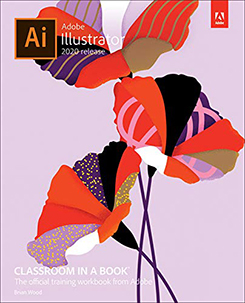MAT 170 Digital Illustration 1: Adobe Illustrator
![]() This is a three unit, sixteen week class in which we will study the design and composition of vector artwork for print publishing and multimedia graphics using Adobe Illustrator. Projects will focus not only on the application of Illustrator techniques, but also on effective visual communication based on the principles of graphic design.
This is a three unit, sixteen week class in which we will study the design and composition of vector artwork for print publishing and multimedia graphics using Adobe Illustrator. Projects will focus not only on the application of Illustrator techniques, but also on effective visual communication based on the principles of graphic design.
In this class, students will spend time developing their design voices through the medium of digital technology, by inspiration as well as information. This class is for those who not only appreciate graphic design, but also want to know how to create it on their own.
History of Vector Graphics
Vector graphics is the use of points, lines, curves, and shapes or polygons, which are all based on mathematical equations, to represent images in computer graphics. Illustrator uses points connected by lines of various shapes, and the lines that define the vector shapes are known to as paths.
Images made up of shapes, such as line drawings, illustrations and logos, are best created in a vector program like Adobe Illustrator. The mathematical formulae that define the points and paths that create vectors results in images that are infinitely scalable to any size and detail, yet the file size of vector data generating the image stays the same. Mathematical operators in the Illustrator software are used to manipulate component objects in the picture with tools that are intuitive and easy to use through the graphical user interface of the computer.
Vector graphic software such as Illustrator is made possible by Bézier curves. The most basic Bézier curve is made up of two end points and control handles attached to each end, or node. The control handles define the shape of the curve on either side of the common node. The curve is named after the French engineer Pierre Bézier.
Pierre Bézier (1910 – 1999) made lasting contributions to computer aided design and graphics as well as to mathematics. Bézier was the son and grandson of engineers and his sons are engineers, five generations of engineers. Forty-six years after receiving his degree in mechanical engineering from the Ecole des Arts et Mètiers, he was awarded a Doctor of Science in mathematics from the University of Paris. Bézier joined the ranks of academia in 1968 as Professor of Production Engineering at the Conservatoire National des Arts et Mètiers, a position he held for 11 years. He wrote numerous papers, four books and received many awards and honors. After university, he joined Renault and remained with them for 42 years until his retirement in 1975. He started as a tool setter and eventually became managing staff member for technical development, a position he held for 15 years. Bézier’s interest in Computer Aided Design began in the early 1960s. The result was his UNISURF system, which was founded on his inventions of Bézier curves and surfaces. That system is still in use today.
